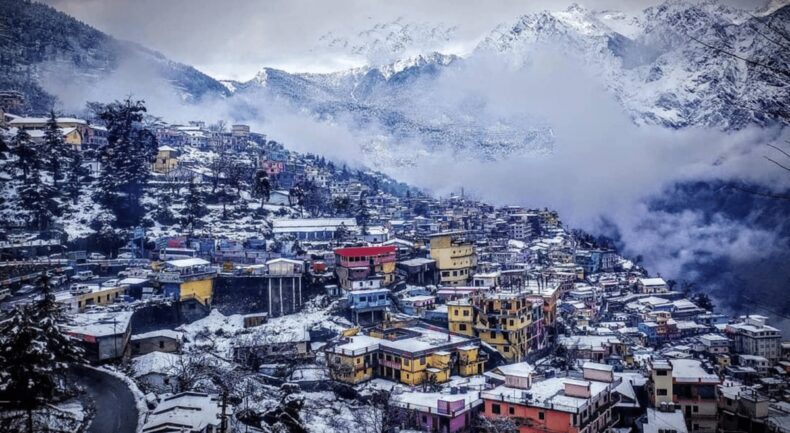Rapid subsidence was detected in Joshimath; the town sank nearly 5 cm in just 12 days.
A preliminary report by the Indian Space Research Organisation’s National Remote Sensing Centre (NRSC) showed that the town of Joshimath went through a rapid subsidence event. For seven months, starting in April 2022, the town sank 7 cm due to slow subsidence. But as per the satellite data collected by ISRO, the town area has sunk by 5 cm in just twelve days since December 27, 2022.
A Disaster of Subsidence
The town of Joshimath in the state of Uttarakhand was recently hit by a devastating disaster caused by subsidence. The disaster has caused significant damage to some of the town’s infrastructure, including homes, businesses, and public buildings. Almost a week after the cracks appeared all over Joshimath, authorities have declared it a “landslide-subsidence zone.”

Subsidence is the gradual sinking or settling of the ground surface caused by natural or human-induced factors. The factors involved can be the removal of water, oil, or other natural resources or mining activities. Earthquakes and soil erosion are also some of the major factors for subsidence.
Joshimath
Joshimath is a small town located in the Indian state of Uttarakhand, in the northern region of the country. The town is situated at an altitude of 6150 feet and is surrounded by the majestic Himalayan mountain ranges.
Joshimath is known for its natural beauty and is a popular tourist destination for its scenic views, temples, and trekking trails. The town is also a popular pilgrimage destination for Hindu devotees, and it is one of the “four maths” established by Adi Shankaracharya. The town is home to many ancient temples, the most famous of which is the Narsingh Temple. The temple is dedicated to Lord Vishnu and is considered one of the 108 Divya Desams, which are the most sacred abodes of Lord Vishnu.
Possible Causes
The reason behind this subsidence is still unknown. But according to experts, it may have been largely due to unplanned construction, with other factors being overpopulation, obstruction of the natural flow of water, and numerous hydel power activities.
It can also be noted that, the disaster in Joshimath is believed to have been caused by subsidence of the ground due to heavy rainfall and the over-extraction of groundwater. The heavy rainfall caused the soil to become saturated, making it more susceptible to landslides, and the over-extraction of groundwater caused the soil to become unstable and unable to support the weight of the buildings and infrastructure on top of it.

The other reason is overburdening due to a large population. As a major tourism hub, the number of tourists increased every year, which gave a boost to infrastructure such as hotels, etc., resulting in the town’s unplanned growth. Then there are megaprojects aimed at bringing mass tourism, such as a hydroelectric project that continued to dig a 12-kilometer tunnel and the Chardham Road Project.
Unheeded Warning
According to experts, Joshimath has been built on ancient landslide material, which means it rests on deposits of sand and stone and not rock. It resulted in them not having a high load bearing capacity.
MC Mishra Committee report issued the first warning about this nearly 50 years ago. It pointed out the dangers of unplanned development in an area that already has natural vulnerabilities. But no government ever paid any heed to the warnings.
The government has now been criticized for not taking enough action to prevent such a disaster and for not having an effective emergency response plan in place.













